Topics
Making Flower Arrangements: Bringing the Blooms Indoors
Flower farmingA certain magic happens when you cut flowers from your garden and bring them together in a floral arrangement or bouquet. It can transform individual blooms in ways that help you appreciate the uniqueness of each flower.

The Basic Floral Elements for Arrangements and Bouquets
Considering the three basic elements that go into a floral arrangement can help you plan what to grow in your flower garden. A bouquet or floral arrangement is usually made from focal flowers, filler flowers, and greenery.
- Focal flowers. Focal flowers, as the name suggests, are the flowers that draw the eye into the arrangement. They don’t have to be large, but they are the star of the show. They are often roses, peonies, and hydrangeas. Zinnias and sunflowers can also be focal flowers. Usually, there are just a few focal flowers in an arrangement.
- Filler Flowers. There are all kinds of filler flowers to fill in the gaps and make the arrangement fuller. Filler flowers are usually smaller blooms than focal flowers. Carnations and Forget-Me-Nots are some beautiful choices. Sometimes the filler flowers are things that you wouldn’t consider flowers. Herbs, such as Anise and Hyssop, make colorful additions.
- Greenery. The third part of making an appealing bouquet or flower arrangement is greenery. It fills in spaces making your arrangements lusher, and adds interest through texture and color. Greenery can be herbs, tree branches, or leaves, depending on your artistic design.
By starting with the proper cutting techniques and knowing how to keep cut flowers fresh, you are ready to begin arranging.
What is the Difference Between a Bouquet and a Floral Arrangement?
People often use the terms "bouquet" and "arrangement" interchangeably, but they are actually very different things.
A bouquet is a group of cut flowers that may or may not be arranged already and are carried during a special event or presented to someone as a gift. Think wedding bouquets or paper-wrapped flowers from the grocery store floral department. They may be all the same type of flower, such as a bouquet of carnations or an assorted mix of cut flowers. Bouquets made from your cutting garden make wonderful gifts for friends and neighbors and allow you to share the beauty of your garden with others!
A floral arrangement is also a group of flowers, but it is already artfully arranged and comes in a vessel with water or floral foam to hold them in place. Think floral centerpieces from professional florists. Floral arrangements are easy to DIY at home with flowers from your garden. You can make simple floral arrangements in canning jars or use more substantial vases for your creations. You can enjoy them in your home or office, and you can gift your arrangements to others.
The good news is that bouquets and floral arrangements are very easy to make at home, and with a few easy steps, you can get a professional look from your creations!
Steps for Arranging Flowers
Choosing Colors
The array of blossom colors can give you a variety of options when creating arrangements. The color of your arrangement can create a mood, from a festive spray of red, white, and blue to a vase of serene purple shades. To make the best use of color, consult the color wheel. Where colors fall on the wheel can help guide which colors will work well together. White flowers are neutral and can be used in any color arrangement.
One possible combination is a tone-on-tone bouquet. To create a tone-on-tone color scheme, choose colors next to each other on the color wheel. An example of tone-on-tone would be a variety of flowers that are all in the yellow range, such as varying shades of yellow sunflowers.
A vibrant color scheme can be achieved by choosing colors opposite each other on the color wheel. An example would be pairing a bright yellow focal flower with purple filler flowers.
You can also consider the color palette of the season. In the spring, you may want to choose more pastel colors like pinks, purples, and blues, while in the fall, you may choose an array of yellows, oranges, and browns. Each season can result in a fresh creative expression of what’s blooming.
Balance and Proportion
To create an arrangement that is pleasing to look at, it’s important to consider balance and proportion. Balance can be both visual and physical.
Visual balance can be achieved by having visual interest on both sides of the arrangement. It should look like all parts of the arrangement received equal attention, even if they aren’t the same. Visual balance is also part of the combination of vase and blooms. They should work together instead of competing. Big heavy flowers will look out of balance in a small, fragile vase. And, small dainty flowers will be overwhelmed by a large intricate container. This is not only visual balance but physical as well.
For proportion, a rule of thumb is to have the arrangement height one and a half to 2 times the size of the container.
Of course, you can always break the rules, but knowing what they are will give you a starting place to work from. Then, you will understand why it’s working or not to achieve eye-pleasing results.

Whether you like to fill simple jars with in-season blooms or create large floral arrangements, flower arranging can become a beautiful habit that brings beauty and nature into your home.
Making Bouquets
The handheld bouquet is the most basic arrangement to start with. This type of bouquet is a collection of flowers that are bound together by string or paper. They make excellent gifts, are easy to transport, and the recipient can then place them in a vase or make their own floral arrangement with your gift.
To create a bouquet, start by holding one focal flower in your hand. Next, add the greenery and filler flowers one by one. As you add flowers and greenery, take note of different shapes and colors to keep it looking organic. You want to create a bouquet that looks good on all sides as you hold it. Next, adjust the stems so that each bloom has room to breathe and be seen. The flowers shouldn’t all be on the same level but at varying heights. When you have created the look you want, tie them with twine, string, or ribbon to keep them together. This finished bouquet is ready to be handed to a friend or placed in a vase.
Making a Floral Arrangement
The steps for making a floral arrangement are similar to the steps for making a bouquet. However, the vessel used for holding your flower arrangement can spark creativity and is often the catalyst for the shape of the arrangement and flowers selected. A canning jar may inspire you to use sunflowers and zinnias for a beautifully casual display. While a delicate, antique vase may be the perfect backdrop for a spray of poppies and hydrangeas.
All kinds of containers can be used for flower arrangements, from canning jars and empty soup cans to delicate milk glass vases and pitchers. There is no need to spend a fortune on crystal for your arrangements. Creative vases can be found at second-hand stores and garage sales as well. By placing a cut plastic water bottle or glass jar inside of baskets and other unique vessels, even containers that aren’t leakproof can be used. Get creative!
Simple arrangements can also be made with one individual stem repeated again and again in a collection of vases. Such as a collection of milk glass vases or laboratory beakers. You can be as creative as you like!
Flower Tools For Making Arranging Flowers Easier
In addition to a vase, twine, and a sharp pair of scissors, there are other tools that will help you create beautiful arrangements.
- Flower frogs are like metal pin cushions. They sit inside a vase and give a base to stick stems into and keep them standing up.
- Another trick to keep flowers standing up and in place is to put a rolled or crumpled piece of chicken wire inside the container. The chicken wire gives additional ways to hold stems so flowers can be placed at different angles and won't slip or move.
- Branches and stems can also be cut and placed inside vases to give stems something to butt up against.
- Another tool of the trade is clear floral tape. It can be used to make a grid on the top of the vase. This grid keeps stems standing in place so they don’t all fall to the edges of the container. Floral tape can also be used to hold groupings of flowers within your arrangement together.

With these flower arranging basics, you are ready to experiment with all the beautiful blooms in your flower garden. There are endless ways to share the beauty, from large arrangements on a formal dining table to a hand-tied bouquet.
No matter what you choose, you can’t go wrong with flowers.



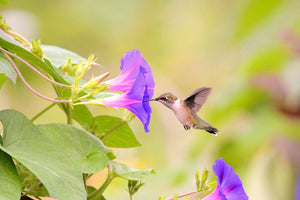
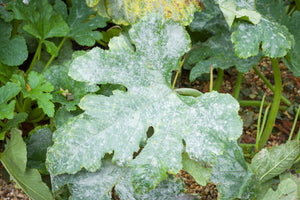
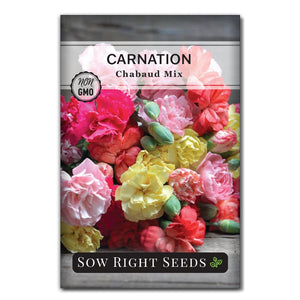
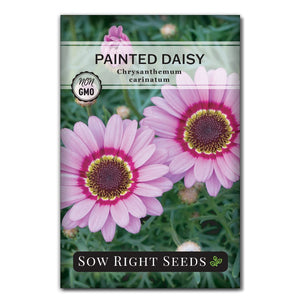
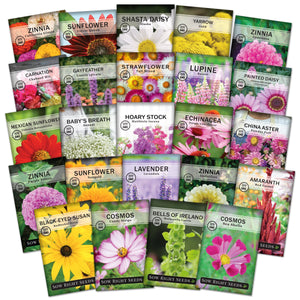
Leave a comment